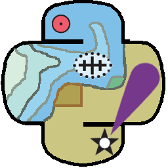Ship mode for dummies¶
Ship mode is designed for a hydrographic ship that collects data on the same network as the processing computer. This is a little different than launch mode, as Charlene can just find the data where it is, so you don’t have to organize it in a transfer drive first.
Unfortunately, Charlene still needs to know where everything is and what your project name, sheet name, etc. are. In order to do this, you basically have to put all of that information into Charlene. It’s a little tedious, but this allows you much more flexibility in where you keep your raw data. Let’s dive in and look at the steps.
Process Modes¶
Go ahead and start up Charlene from Pydro Explorer.
Process modes are all the things on the top of the screen. For processing a new day, choose the ‘Process MBES...’ mode that matches the vessel you are on. Process MBES - RP at IMU (TJ/FH) for the Jefferson and the Hassler. Rest should fall into the FA/RA mode. You’ll want to ‘Transfer and Process Data’ using ‘Ship’ mode and probably ‘NAD83’. If you have svp files, Charlene will autodetect UTM Zone. Otherwise, you’ll want to pick it. Check RawDataChecks if you want to analyze your raw data for things that could cause Charlene to fail. Recommended you check this. That should summarize everything you’ll need to do up top.

Once we pick the other options, you might need to come back up here and pick ‘AutoQC’ or some other checkboxes, but for now, let’s move on to...
Data Directories¶
Now we get into pointing Charlene at the directories where our data lives.
This is a little laborious in Ship mode. What you want to do is first set the root of the Raw/Processed data drive to the destination on your NetApp. This will populate the Project/Sheet/Vessel/Day on top with existing projects.
- If you are adding a new day to an existing project, use the populated drop-down boxes to find your project/sheet/vessel and type in a new day number.
- If you are creating a new project, you’ll need to type in the project/sheet/vessel/day into these boxes, as your project/sheet/vessel will not be in the list.
NOTE: Make sure that the vessel name is the same as your hvf name, without the ‘.hvf’!
Then, you’ll need to point Charlene to five things:
- The multibeam day number folder where all the MBES files are for that day
- The POSMV day number folder where all the POS files are for that day (leave it blank if you have none)
- The Raw MVP/CTD folder where all your raw sound velocity files are for that day (leave it blank if you have none)
- The SVP folder where all your processed .svp files are for that day (leave it blank if you have none)
- Acquisition log folder where your acquisition log files are for that day (leave it blank if you have none)
At that point, you should see a few things, that are great ways to know if you did it right:
- The ‘FILES TO TRANSFER’ window just to the right should populate with everything about your day. Make sure the info is right and the files are all there.
- To the right of that window are the folder structures that are going to be created. If you don’t like what you see there and want the Caris processed data to live somewhere else, here’s where you find that out before you hit start!
- Right above those folder structures, you’ll see a few options. These two options (NOAA Support Files and Directory Structure) represent the NOAA Specific stuff that can be enabled or disabled if you choose. The NOAA Support Files checkbox allows you to disable/enable NOAA Caris support files. These are used during surface generation. If you don’t have this checked, it will use default parameters. The Directory Structure box specifies with version of the directory structure you want to use. Using NOAA_2017 will use the NOAA 2017 Specifications and Deliverables mandated directory structure. You can build your own ini file if you wish to use a different structure.
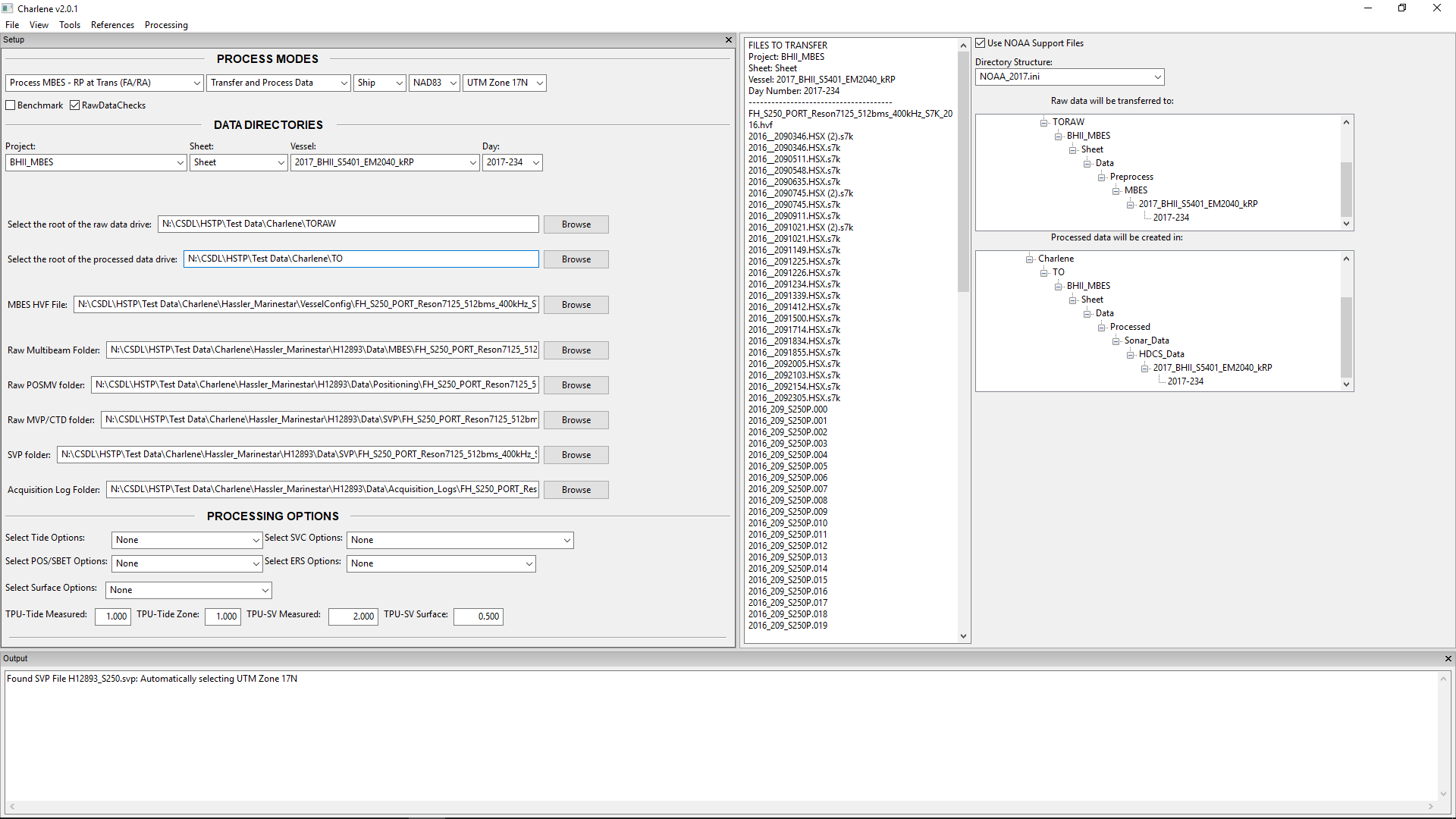
Processing Options¶
Now the fun stuff, how do we want to process our data? Check out the modes section if you want all the details, I’ll just give you an example and explain whats going on:
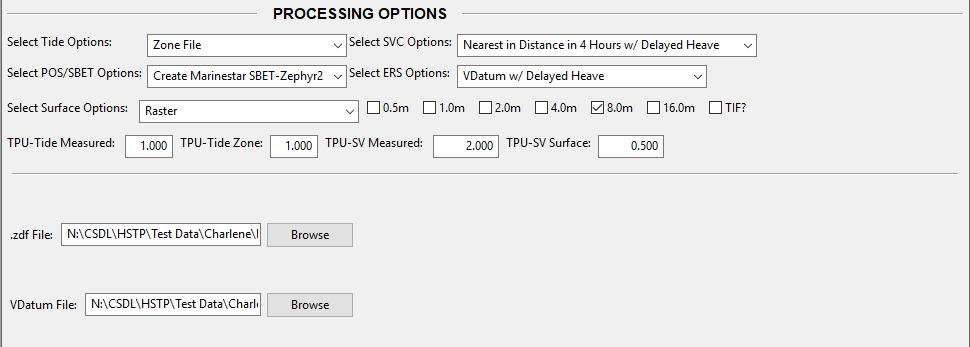
This is basically an east coast Marinestar wokflow. Here we:
- Create a Marinestar SBET in POSPac and copy it over to our new directory structure
- Convert our Kongsberg data according to the TJ/FH workflow
- Load Zone tides with a zdf file just like we would in Caris
- Load our SBET for height/nav and Load our .000 files for delayed heave
- Use the Caris Nearest in Distance in Time - 4 hours to apply sound velocity
- Use our VDatum surface for Caris compute GPS tide to get to the ellipse
- Merge with gps tide (since we computed it) and delayed heave (since we imported it)
- Compute TPU with all the settings we have in Charlene (entered in those boxes labeled ‘TPU’
- Generate an 8m raster surface
Since we chose a surface and are creating an SBET, you’ll see ‘GridQA’, ‘FlierFinder’ and ‘HolidayFinder’ show up for QCTools options and AutoQC show up for SBET options. Check them if you want to run any of these tools.
Let’s go!¶
Go to the top and select ‘Processing - Start Processing’ to start. You’ll see it go through a few different modes:
- Precheck mode - Runs Charlene’s 37 parameter check to ensure that all settings are valid for the data that you have. If you don’t pass one of these checks, it’ll halt the process and let you know what to fix.
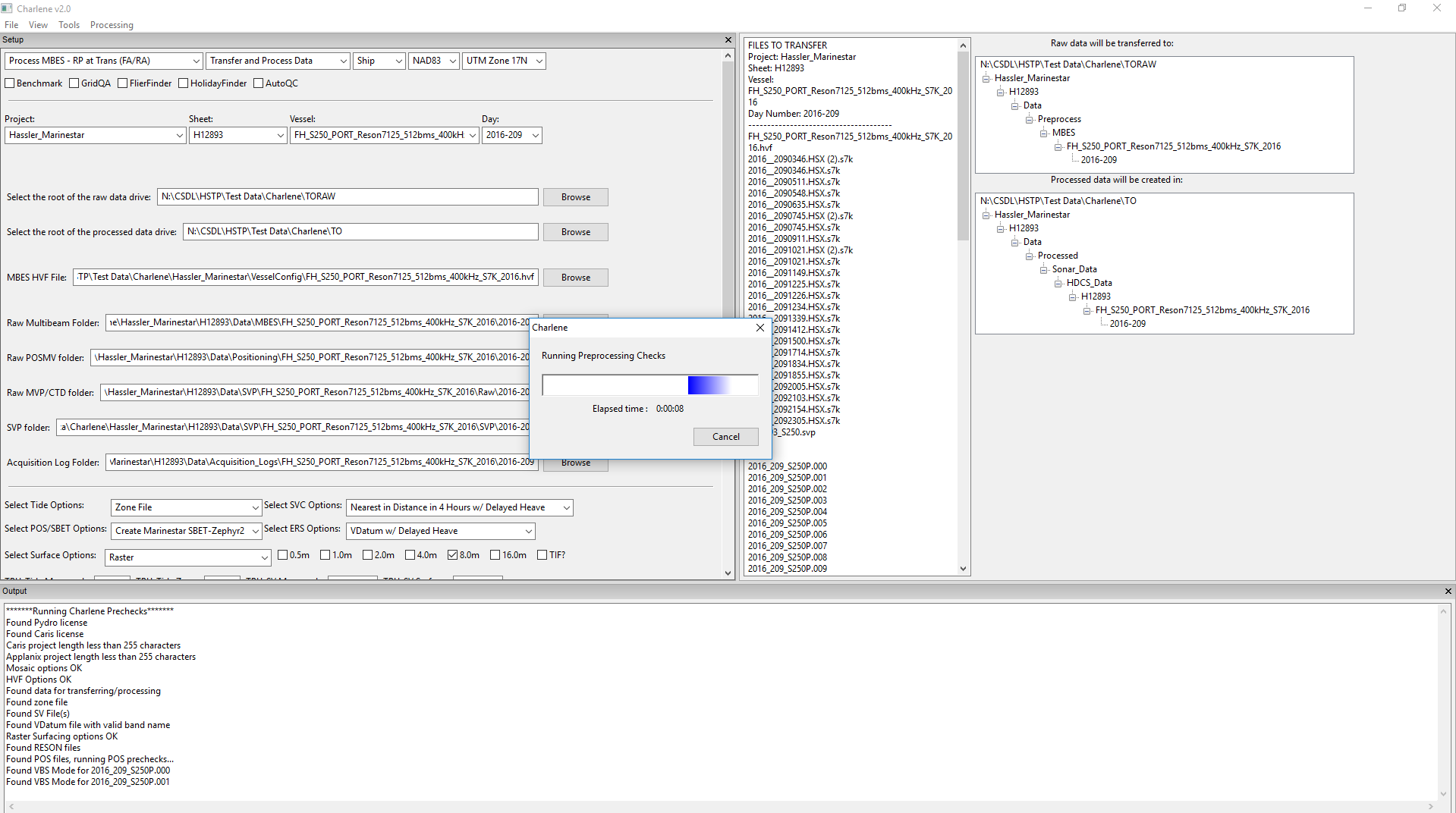
- File Transfer mode - Creates all directory structures according to the NOAA Specifications. Transfers data using Windows Robocopy and verifies transfers using Python tools.
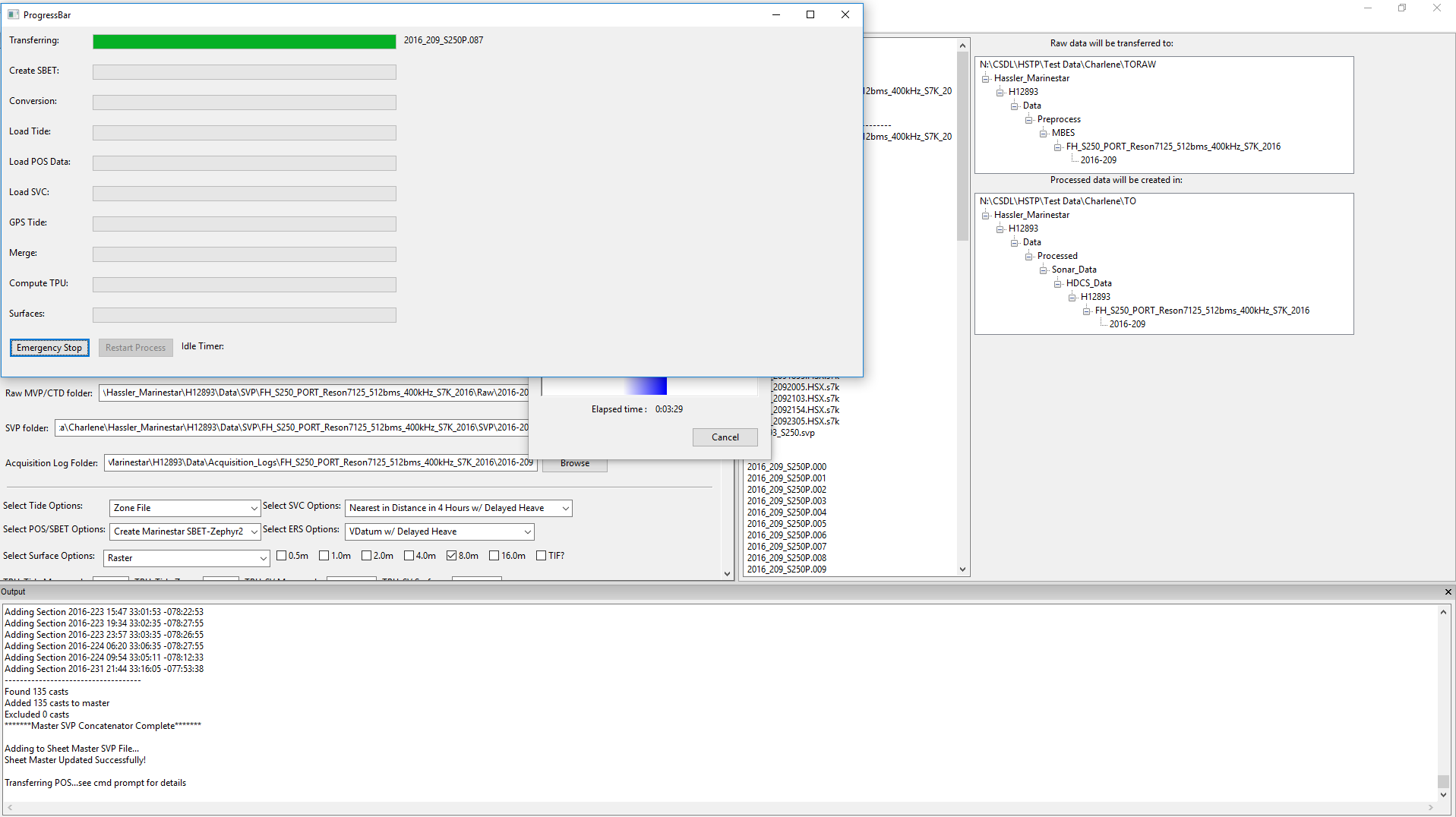
- Create SBET (POSPac) - Charlene will first create an SBET using POSPac Batch Processor. You’ll get some messages in the output window and you can track your progress in the ProgressBar window on top.
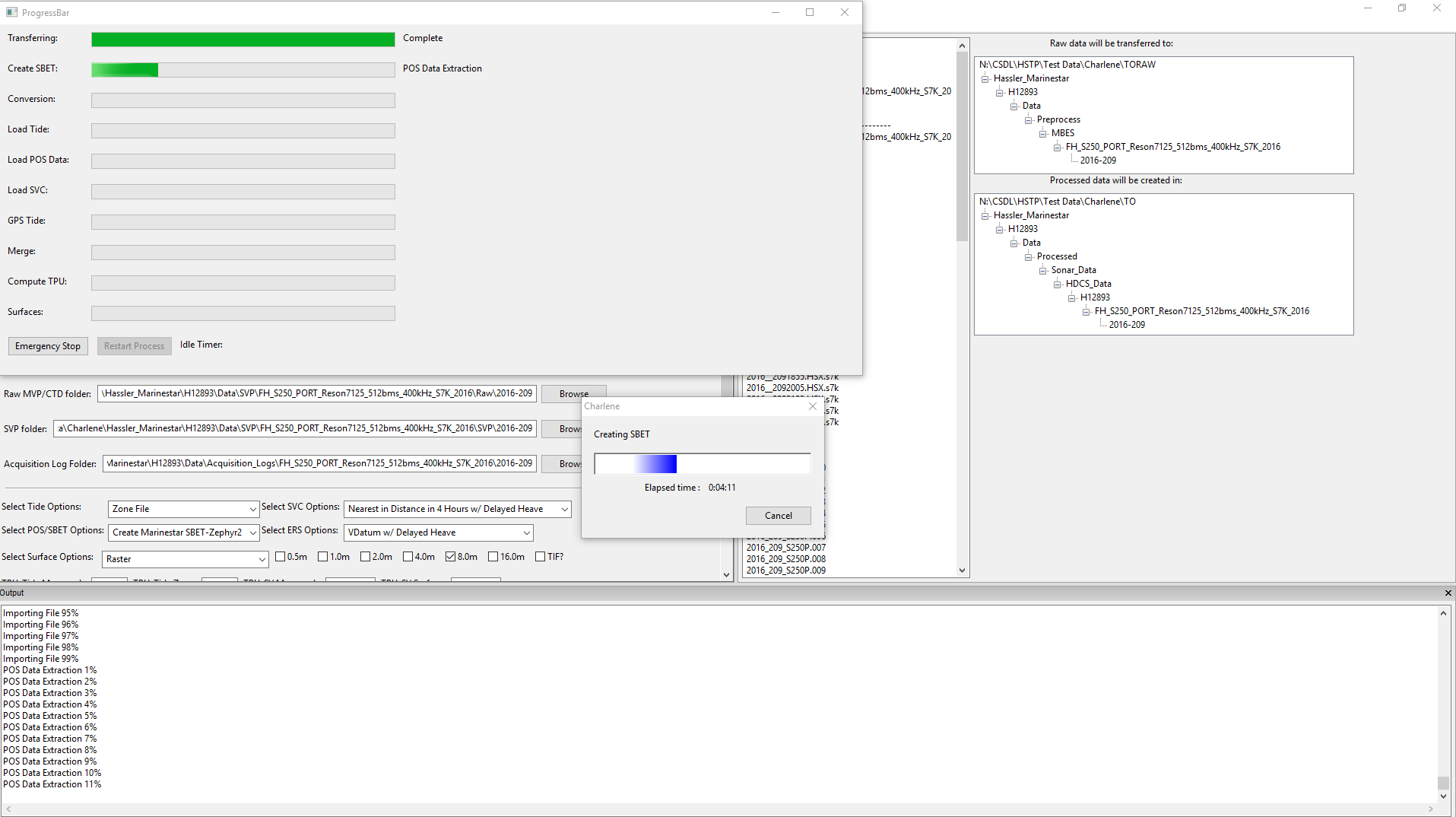
- Caris Processing (Caris/Pydro TCARI) - Charlene will then do all the Caris processing, including loading your newly created SBET!
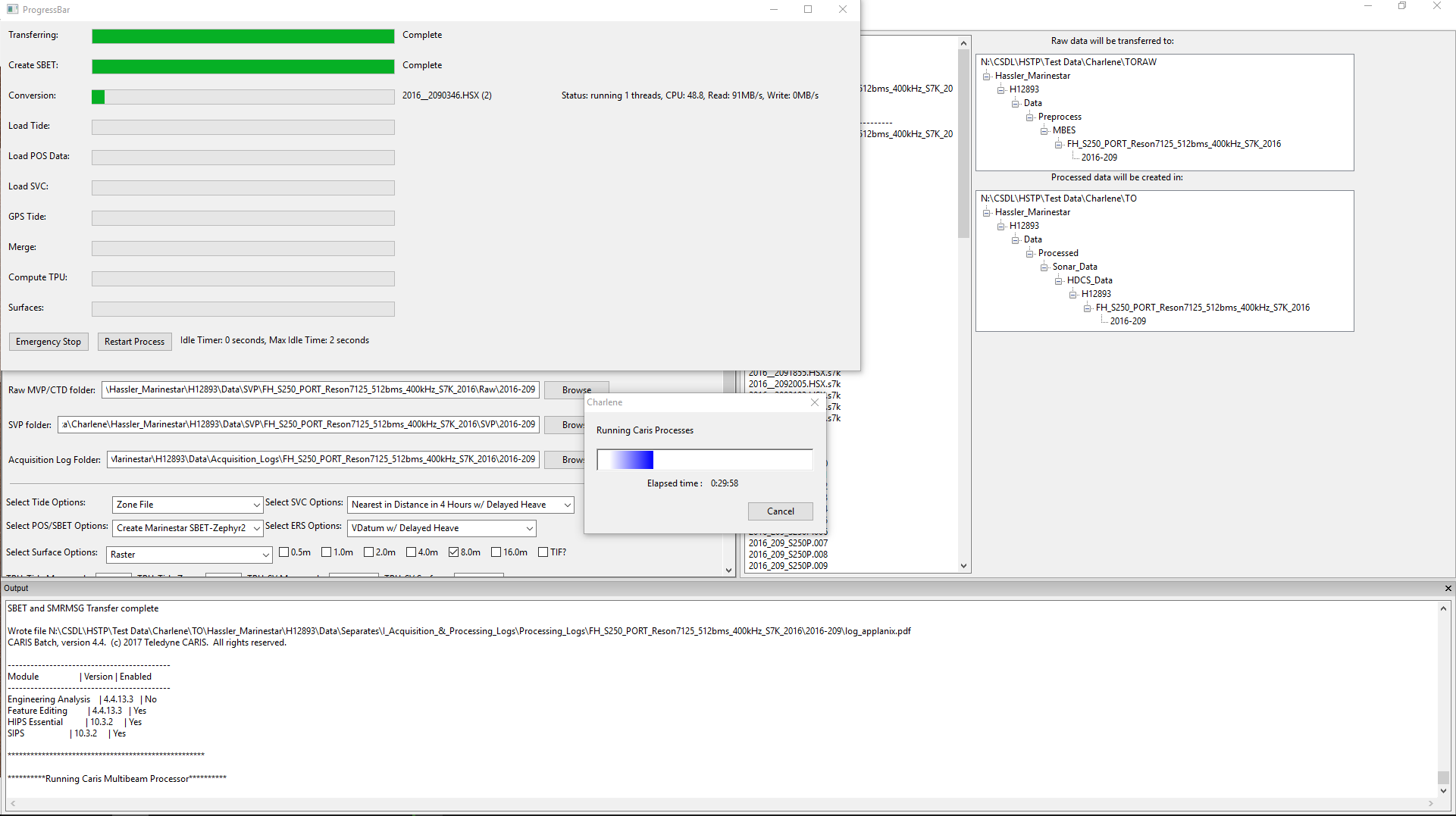
Finally, Charlene will open up a Caris session and let you see your newly processed data. Take a look and make sure everything was created as you wanted it to. Review the output window in Charlene to make sure it all makes sense. Everything in the output window will also be saved to the processing logs folder in the processed data directory structure.
Resources
- Online Resources:
Contact
If you find errors in the documentation or want to contribute, you are encouraged to email the following personnel emails @NOAA.GOV
- barry.gallagher
- jack.riley
- chen.zhang
- eric.younkin
